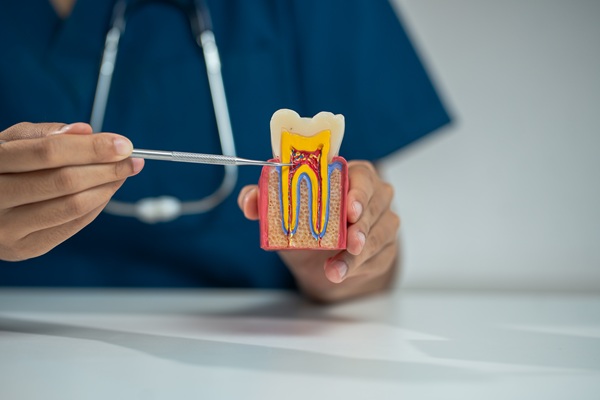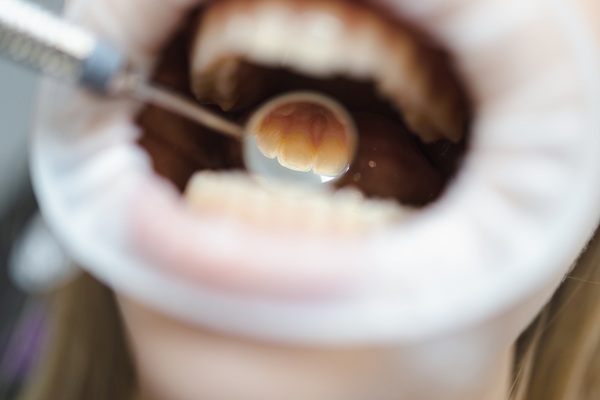Occlusion is a term used in dentistry to describe the contact between the upper and lower teeth when they come together. This jaw relationship is vital in chewing, speaking, and other mouth functions. Several different types of dental occlusion may be encountered in a dental practice. This article will explore occlusion, its importance, and how it can be corrected.
What Is Occlusion in Dentistry?
Dental Occlusion studies how teeth fit together and interact when biting, chewing, and speaking. It involves analyzing the relationship between the upper and lower jaw and how the two sets of teeth meet or “occlude” when biting down or closing. An improper occlusion can lead to various dental & periodontal issues such as tooth decay, enamel erosion, pain, difficulty with eating and speaking, muscle tension headaches, joint problems and more.
Importance of Occlusion
Occlusion is a vital part of dental health and well-being, as it affects the appearance of the face and how efficiently one can chew food. Poor occlusion can lead to problems such as tooth decay, jaw pain, headaches, and even poor facial appearance. It is also essential for speech development and the proper functioning of chewing muscles and the temporomandibular joint.
Proper occlusion is critical in early childhood when teeth are first developing. Any irregularities during this period can cause misalignment or discrepancies that may lead to further issues later in life. For example, overcrowding or misaligned teeth can cause an overlap between upper and lower teeth leading to difficulty chewing. An incorrect bite can also cause excess wear on some mouth regions, which may lead to fractures or fracture lines along the tooth surface.
In addition to affecting your ability to chew correctly, occlusion also has aesthetic implications. People with good occlusion have a more symmetrical facial structure with even features. On the other hand, those with poor occlusion may have asymmetrical facial features, which give a less appealing look overall.
Malocclusion
Malocclusion is a misalignment of the teeth or jaws that can cause bite irregularities. It is one of the most common types of occlusion in dentistry and can negatively impact oral health and other aspects of life. Common causes include genetics, dental diseases, developmental issues, and trauma to the mouth. Malocclusion often needs to be treated with braces or other orthodontic treatments.
Angle Classifications
Angle classifications refer to how the upper and lower teeth fit together when biting down. Angle classes are named after Edward H. Angle, who first categorised malocclusions into three distinct categories: Classes I (normal occlusion), II (distal), and III (mesial). Each class is further divided into sub-categories depending on the severity of the malocclusion.
- Class I: This is the most ideal occlusion and means no bite irregularities.
- Class II: This occurs when the upper teeth extend beyond the lower teeth, resulting in an overbite (also known as a deep bite).
- Class III: This occurs when the lower teeth protrude beyond the upper jaw, creating an underbite (or reverse bite).
If malocclusion is not treated, it can lead to further problems such as:
- Painful jaw conditions, such as TMJ (temporomandibular joints)
- Tooth decay and gum disease due to food getting stuck in between teeth
- Speech impediments caused by misalignment of the jaws
- Inability to properly clean teeth, leading to plaque buildup
- Difficulty chewing or speaking.
Types of Occlusion in Dentistry
The most common types of occlusion in dentistry are:
Static occlusion
Static occlusion refers to the position of two teeth when they are in contact, but no force is applied. This can be seen when a patient bites down on their back teeth, where there should be balanced occlusion and a symmetrical point of multiple contacts between upper incisors and lower incisors with no force exerted.
Dynamic occlusion
Dynamic occlusion refers to the contact of two teeth when lateral movements such as biting or chewing are applied. This occlusion can be seen when a patient’s habitual bite has an even distribution of pressure between the maxillary (upper) and mandibular teeth (lower) for proper function. Rather than points of occlusal contacts, dynamic occlusion involves lines of contact where pressure is applied.
Centric occlusion
Centric relation refers to the position of two teeth when they are in contact, and maximum force is applied. This can be seen when patients clench their jaw as tight as possible. There should be a symmetrical point of tooth contact between maxillary and mandibular incisors with force exerted equally among all points.
How Do You Treat Occlusion Problems?
Occlusion problems can be treated in various ways, depending on the severity of the incisor relationship. After occlusal examination, some common treatments include:
Equilibration
Equilibration is the process of adjusting and reshaping a patient’s teeth to achieve better contact between them. This may involve filing down certain parts of the teeth or adding bonding material to enhance the biting surface.
Restorative Dentistry
Restorative treatment is an essential option for treating occlusion problems. Clinics like Bellevue Hill Dental offer dentistry options such as crowns, bridges, and veneers to improve teeth’ alignment and function. This type of treatment helps to reduce risk factors associated with tooth wear and malocclusion, which can help improve overall smile aesthetics.
Splints
Splints are dental appliances that can be used for providing anterior guidance. They help realign opposing teeth and jaws by applying gentle pressure over time. Splints are often made of plastic or metal and are customised for each patient to provide the most effective treatment possible.
Orthodontic treatment
Orthodontics is a branch of dentistry specializing in correcting improper bites or misaligned teeth. Orthodontic treatments at Bellevue Hill Dental can include braces, retainers, and other corrective devices to straighten and align teeth for a healthier and better-looking smile. Orthodontists may also use advanced imaging technology, such as 3D scans, to accurately measure and diagnose misalignment issues to plan the best treatment options.
Final thoughts
Occlusion is a complex concept involving teeth’ alignment when force or pressure is applied. To ensure you have healthy teeth and gums, visit your dentist regularly so they can identify any potential issues before they become serious health concerns. With regular visits to your dental professional and proper occlusal adjustment, you should maintain optimal occlusal harmony throughout life.
If you are experiencing any issues related to occlusion and don’t know what to do, contact Belleville Hill Dental to book an appointment with one of our experienced dentists. We are always happy to help!




